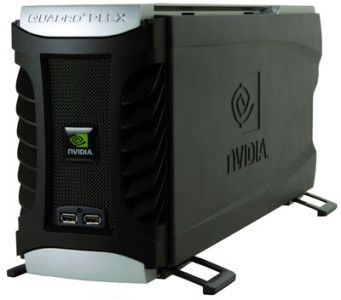From our front-page news:
It's unlikely that many would disagree that parallel computing is in the future, and if you ask NVIDIA's David Kirk, it's best done on a GPU. Bit-Tech's Tim Smalley sat down with Kirk, NVIDIA's Chief Scientist, for a lengthy chat discussing everything from parallel computing with CUDA to Intel's Ct to ray tracing and rasterization and oh so much more. There is little ground not covered, so a coffee refill would make sense before reading.
CUDA is NVIDIA's answer to parallel computing, allowing developers to write code in C designed for special purposes that would execute much faster on a GPU than on a multi-core CPU. Kirk mentions in the article that certain tasks would just not be feasible on a CPU, and when speaking of offloading GPU processes to a CPU, he mentions that "it would be at least a thousand times too slow". Well then, can't get a more straight-forward answer than that.
He also has no issue with commenting on the competitors, and some of the responses are quotable, such as, "Their market cap is about three billion, so it's hard to see where the future is in that picture. Really speaking, they're going to have to pull not one, but several rabbits out of the hat." when speaking about AMD. Harsh, but it's difficult to disagree at this point. Don't worry, Intel feels the wrath as well, with "Building a CPU is not that hard".
I am pointing out the humorous bits, but the article as a whole is informative if you want to brush up on where CUDA stands, why it exists, and what's in store for the future.
<table align="center"><tbody><tr><td>
 </td></tr></tbody></table>
</td></tr></tbody></table>
"The biggest problem ahead for GPUs is that they are designed to be multi-core and we've made all of the mistakes before," David explained, while laughing. "OK, maybe not all of them - but we've learned a bunch of things over the years through the course of building massively parallel GPUs.
Source: Bit-Tech
CUDA is NVIDIA's answer to parallel computing, allowing developers to write code in C designed for special purposes that would execute much faster on a GPU than on a multi-core CPU. Kirk mentions in the article that certain tasks would just not be feasible on a CPU, and when speaking of offloading GPU processes to a CPU, he mentions that "it would be at least a thousand times too slow". Well then, can't get a more straight-forward answer than that.
He also has no issue with commenting on the competitors, and some of the responses are quotable, such as, "Their market cap is about three billion, so it's hard to see where the future is in that picture. Really speaking, they're going to have to pull not one, but several rabbits out of the hat." when speaking about AMD. Harsh, but it's difficult to disagree at this point. Don't worry, Intel feels the wrath as well, with "Building a CPU is not that hard".
I am pointing out the humorous bits, but the article as a whole is informative if you want to brush up on where CUDA stands, why it exists, and what's in store for the future.
<table align="center"><tbody><tr><td>

"The biggest problem ahead for GPUs is that they are designed to be multi-core and we've made all of the mistakes before," David explained, while laughing. "OK, maybe not all of them - but we've learned a bunch of things over the years through the course of building massively parallel GPUs.
Source: Bit-Tech
